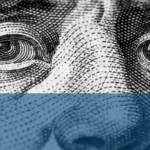In simple terms, a forex trading strategy is the decision-making process that determines if and when you buy a currency pair. Usually, these strategies are based on technical or fundamental analysis. In saying that, trading strategies come in many shapes and forms and there’s an endless list you can choose from depending on your experience, understanding, and risk tolerance. You can even create your own but for now, we will focus on the basics.
What is Technical Analysis?
Technical analysis is a trading strategy that uses charts, price trends, and patterns to forecast market movement. Traders employing technical analysis are essentially historical price patterns and market movement as indicators of what is to come. Let’s see a couple of examples.
- Reversals
No matter how long a trend might last, it always has a starting and an ending point. A reversal is a point on the chart when a price starts going the other way – if it’s up it goes down, and vice versa. What causes these changes? In the case of an uptrend, buying decreases causing the price to fall whereas, during a downtrend, there is little to no selling interest which makes the price rise. Being able to spot when the reversal will occur, can massively benefit traders as it gives them the opportunity to exit their positions on time. Reversals are most common based on the Fibonacci retracement – be sure to learn this trading strategy here.
- Range trading
Range trading is another popular technical strategy. It is a scenario where a currency pair is overbought and oversold, creating a range of support and resistance, and a short-term opportunity to buy and sell. Range traders essentially create buy and sell orders that reflect the behavior of the range, believing that the price will repeat its past behavior.
What is Fundamental Analysis?
Fundamental analysis is a trading strategy that uses a combination of qualitative and quantitative factors to determine the value and potential of a currency pair. Examples of these factors are: economic, social, and political. Let’s see some examples.
- News trading
When it comes to news trading, timing is everything. The market reacts to this news almost immediately trying to absorb it and reflect it in prices.
What’s interesting to note here is that if you have a flair for understanding economics and analyzing news reports and figures, you have an advantage over automated solutions that do the same. The reason? These algorithms are not yet as sophisticated and usually analyze information at face value, not understanding the nuances and details involved in a press release.
To contextualize this, an algorithm will probably base its assessment on headlines and huge figures when in reality, the impact of the news release might be not as grand. That creates a gap in the market for those who are willing and capable to execute news trading. Algorithms will exaggerate or underreport news and create an opportunity for news traders to come in and capitalize.
- Carry trading
The thinking behind carry trading is simple and it has to do with interest rates: During a carry trade, a trader borrows a currency that has a low interest rate, and then uses that money to buy a different currency that pays a higher interest rate. The trader is essentially making money on the difference between the interest rates.
As you can imagine, this is not as thrilling or hands-on as day-trading but it’s considered one of the most popular and successful ways to trade forex. It is a long-term play and one that requires attention to detail as well as patience.
How to choose the right Forex Trading Strategy
Before choosing a trading strategy, there are a few things you need to consider and ask yourself.
- How much effort are you willing to put in?
Let’s start with effort. How much of your time are you willing to invest in this? Different strategies require different levels of involvement and not everyone is able to sit in front of a laptop to develop and implement their forex trading strategy. If you are still new to the trading world and not a full-time trader, you will probably opt for an automated solution. Automated solutions use an algorithm that records trading signals and executes trades autonomously.
- What is your risk tolerance?
The question is simple: how much are you prepared to lose in order to get a favorable return? Once again, depending on your experience level and budget, different strategies have different risk levels attached to them. Choose the one that is most appropriate for where you are in your journey.
- Are you creative or analytical?
Personality plays a huge role when choosing the right trading strategy. The strategy needs to complement your strong points. If you are good at math, analytics-driven, and do well with charts and formulas, a technical analysis-based strategy is a way to go. If on the other hand, you are more creative and trust your intuition, a fundamental analysis-based strategy is the one for you.
- How patient are you?
Forex trading is oftentimes a game of patience and attrition. Much like the example of risk tolerance, trading strategies usually have a long-term, short-term time allocation attached to them. Depending on how long you want to be involved in the forex trading game and what you are looking to get out of it, there’s a strategy to reflect that.











One thought on “Forex Trading Strategy: What Is It, How To Choose Your Own & When Is It Time To Change It?”